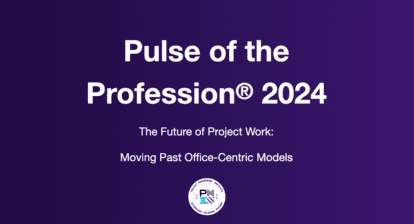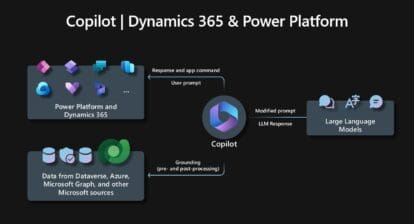When I turned eighteen, I ran away from a disconnected home and joined the U.S. Army during the Vietnam War. Periodically, I heard the term “SWAG” from officers and didn’t understand what they were talking about. I eventually learned it stood for “Scientific Wild-A** Guess,” which really meant a high-level estimate, a ball-park number, or guesstimate. The bottom line was that one could expect a high rate of error. For example, the number of troops that needed to be deployed. When you start a project with initial work packages, you probably have a SWAG estimate of cost and duration, but you also should know that these estimates must be studied and revised for better accuracy. So, let’s look at some ways to improve your SWAG and increase your chances of success.
- A Lessons Learned Register: Review lessons learned from past projects or from a Lessons Learned Register to find effective estimates for resources and durations.
- An Initial Plan: If you have similar past projects, use that information for building your new plan. The last thing you want to do, is to reinvent the wheel or have to start from scratch! Templates (*.mpt) are often used as a basis for a new file (*.mpp) because they contain features that are common to projects. Just edit the tasks, names, dates, and so on to fit your current needs. Numerous pre-built templates come with Project to help you get started on the right track with your work packages, and there are many third-party vendors providing templates, too. For example, Project Widgets syncs with Project Online/Project Server and offers fine detailed templates for many types of businesses.
- Expert Feedback: Get knowledgeable feedback from people on your estimates. You’ll need this to improve, and it’s an extremely popular approach. Expert judgement can come from people who have managed similar projects and/or from those that are doing the work.
- Delphi Method: This is where you have a group of experts providing their estimates and eventually reaching consensus. Two excellent Wikipedia articles on this are The Wisdom of Crowds and Delphi method. It’s a good approach to use at the start of a project when there are many unknowns.
- Independent Estimates: This is a process of using a third party to obtain/analyze information which will be used to support prediction of cost, schedule, or other items (PMBOK 2017, pg. 708).
- 8/80 Rule: This rule suggests that a task duration that is between eight hours (or one day) and 80 hours (10 working days) is generally the right size. Tasks shorter than a day (too granular?) or longer than two weeks become too hard to manage properly. This is a good rule to go by, but you may have valid exceptions.
- Top-down Planning: You may want to use this approach (generally or specifically) if you have experience with similar projects because it allows you to work on higher phases, and then progressively, work your way down allocating time to lower levels.
- Bottom-up Planning: In this scenario, you’ll address the lowest level tasks which automatically calculate into summary tasks, rolling upward, until you have an estimate for your entire project. Project and Excel are the ideal tools for doing this! If you use Excel, you should only export (i.e. Export Wizard > Task Mapping) work packages from Project to Excel. Work on or fine-tune your estimates, and then import (i.e. Import Wizard > Task Mapping) them back into Project. I’ve found I get better accuracy using this approach, but it can be time-consuming versus the top-down approach.
- Phased Estimating: Estimate with more accuracy as a project progresses. At the end of each phase, review your performance and refine your estimates for the next phase and overall project.
- Parametric Estimating: This is an estimation technique in which an algorithm is used to calculate cost or duration based on historical data and project variables/parameters (PMBOK, 2017, pg. 712). This approach is helpful if you have a significant history of project performance, and you know how to extrapolate the cost and duration for a given unit. For example, a module of software development, running an annual disaster recovery test, or using contractors.
- PERT (Program Evaluation Review Technique): This procedure was developed by the U.S. Navy in 1957 to assist in its’ Polaris Nuclear Submarine project. It’s a statistical approach, which allows a project manager to observe an operation and what-if scenarios without performing the actual operation. For example, looking for different project outcomes for the duration of each task using sets of randomly generated values. The result is a probability model of a project finishing on time given patterns of optimistic time, most likely time, and pessimistic time. For most activities, I generally use the most likely time, and if I am not sure, I go with pessimistic time. Excel is an excellent tool that can be used for simulation along with add-on products that will help you with financial analysis, risk management, and cost estimation. Two good add-ons are @Risk from Palisade.com and Crystal Ball from Oracle. PERT is also commonly used in combination with the critical path method (CPM).
- Precedence Diagramming Method (PDM): It’s extremely important to have good task estimates that have the correct activity sequencing well defined (i.e. lead/lag times, task constraints, critical/noncritical tasks, and milestones). A popular way of doing this is using the PDM, which is a method for scheduling activities in a plan using something like a network diagram. Some of the key task elements include early/late start dates, early/late finish dates, and durations.
- Resource Management: Since project resources could be working on multiple projects, it’s important to create a resource pool when it comes to estimating. This eliminates the possibility of major setbacks. The project manager needs to make sure that the resources that are assigned to his project will be available when needed, and it’s good to know their backups, so you’ll have a substitute.
- Law of Diminishing Returns: Always be careful when increasing the number of resources to do an activity with the intention of reducing time. At some point, adding more resources may increase the total time (and costs) because of extra risks, knowledge transfer, and additional coordination.
- Padding: Don’t inflate or pad your task estimates—they get bigger as they move up the food chain and could ruin your credibility. Additionally, no one will really know when the project will end.
- Contingency Reserve or Known-Unknowns: The amount of the contingency cushioning or insurance depends on the amount of known risks involved. If it’s a simple project, the contingency fund could be 5 to 10 % of your initial total project estimate. If the project isn’t well-defined or is unfamiliar work, the contingency fund could be 50 % or more. It would be ideal if you could map your known risks to your Work Breakdown Structure (WBS), providing a better idea about where clusters of risk may lie in your project.
- Management Reserve or Unknown-Unknowns: It’s another level of cushioning or insurance that is needed for unknown risks or unexpected events that can occur during the duration of a project. This pool of money could be 5 to 25 % depending on the type of project and its’ duration. Large projects (especially ones implementing or using new technology) should have a management reserve and/or contingency reserve. Usually these two reserves are external to the working budget, but accessed when there are “bumps” on the road.
- Miscellaneous Direct Expenses: When making guesstimates, don’t forget to include time and cost for rework, communications, administrative activities, travel, support equipment, and payments to vendors.
- Estimation Standards: It would be ideal if your organization develops guidelines that use actual data generated by the project management team to estimate the level of effort needed to complete projects. Such guidelines should identify the type of estimation performed (i.e. lines of code, number of work packages, and size of documentation) and any tools used in the estimation process.
- Combine Strategies: Use two or more of the above suggestions in conjunction to estimate your project. For example, on complex projects, I would recommend project managers use both the top-down and bottom-up approach to arrive at a better estimate. On large HW/SW implementations, I would use the Delphi method, phased estimating, contingency reserve, and management reserve.
Do you have any other tips to add that we all may benefit from on improving that SWAG? Leave your comments below.







